Ballet Manila's Florante at Laura as Contemporary Performance

Filipinos would remember learning about Francisco Balagtas’ Florante at Laura in high school. Perhaps some look back on reading the 1838 epic, while others would’ve performed it. A few years after high school, though, we barely remember what it was about. There were battles, betrayals, and, obviously, a love story. But the details? The specifics? It is harder to remember, even if the title is unforgettable.
Ballet Manila’s Florante at Laura is a different story. The struggle, perhaps, is that we try to read the awit—a Tagalog poetic form with four lines per stanza, 12 syllables per line with a caesura, and monorhyme scheme (AAAA)—rather than experience it as a performance. Florante at Laura translated the poem into dance, and it was beautiful. We will not learn about the multiple battles, for sure, and even from reading the text, all the multiple battles are difficult to keep track of. But, the conflict between the kingdoms, the betrayals within them, and the possibilities of eventual understanding are translated into contemporary choreography. Watching the performance of several battles doesn’t get as tedious as the text, but the tensions are deeply felt.
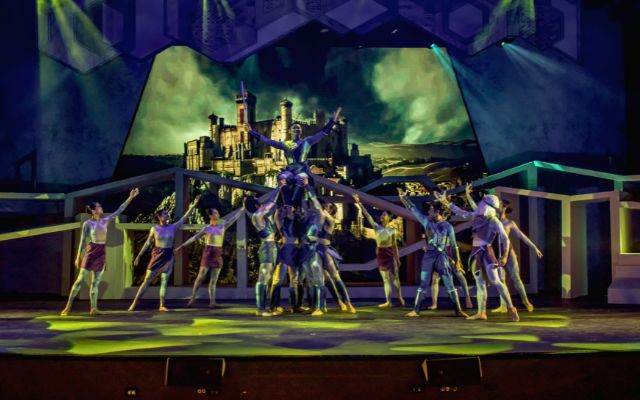
ALSO READ
Want to Appreciate Ballet Better? Stop Trying to 'Get' It
10 Ways to Enjoy the Arts, According to Lisa Macuja-Elizalde
From Text to Performance
In school, we read Florante at Laura as a literary translation of the struggle of Filipinos against Spain’s colonization. Though such reading is possible, the plot and narrative belong in their time and place in the 19th century, especially with local writers and artists keen on demonstrating their capacity to learn, write, and produce on par with European counterparts. Creating a world with kings and queens, castles, battles, betrayals, love stories, and conflicts feels emblematic of the time. Translating this into contemporary ballet and orchestral music—with the tensions of local and foreign, and the struggle of defining Filipino art always a touchpoint—would’ve always been a challenge.
Ballet Manila’s project, in many ways, is a successful one. The choreographers Gerardo Francisco Jr. and Martin Lawrence leaned toward contemporary movement, yet blending it with graceful pointe work. The tensions, peace, love, pain–even the general plot points are captured through movement and are definitely more unforgettable and deeply felt compared to reading the text. One well-applauded scene is when Fledira shoots an arrow at Adolfo as he is about to take advantage of Laura–the arrow is caught by one dancer and is carried across the stage toward Adolfo, killing him and saving Laura. The dynamics on stage were lively–effectively letting the viewers experience Florante at Laura through movement and music.
Contemporary Translations and Tensions
The key highlight of the performance is the music composed by National Artist for Music Ryan Cayabyab and performed live by the Orchestra of the Filipino Youth under the baton of Toma Cayabyab. The deeply felt compositions were beautifully executed through the live music and permeated through the contemporary dance movements of Ballet Manila’s company dancers. The music’s rise and fall, the tensions and ease, and the momentary lightness in between are journeys taken through sound blending together with the movements on stage.
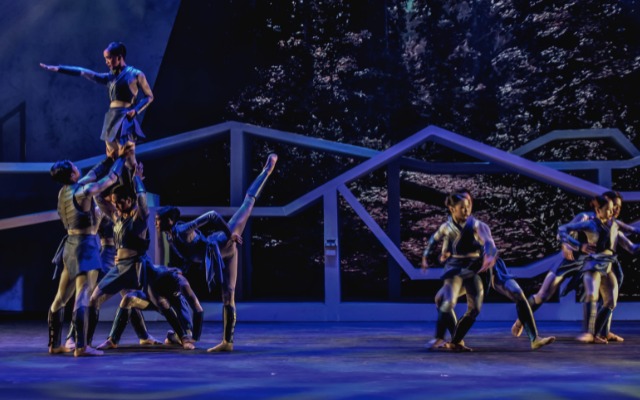
Stage design for Florante at Laura leans with geometric forms–echoing the designs in the costumes of the dancers. The solidly built stage, where the dancers go up and down and, at moments, slide down slopes, is effective in giving a sense of presence in otherwise distant castles and forests. The play on shadows around the stage and beyond it highlights the movements of the cast–including most of the theatre in the visuality of the performance. If anything, what didn’t work is the digital backdrop–giving highly polished digital images of castles, mountains, cliffs, and forests that do not mesh well with an otherwise beautifully designed and lit stage.

The use of colors and design helped locate the setting and the loyalties of the dancers–including blue for Florante and Laura, and red for Aladin and Flerida. The contemporary, sleek, and geometric design gives a fluid transition in the expressive movements. The lines and shapes are echoed through the costume and stage, unifying the look and feel. In the betrayal scenes with Adolfo, using head scarves in blue-green signals the changing and shifting loyalties. The fiery reds for Aladin and Flerida give a vibrant visual cue, initially presented as the enemies, yet eventually embraced as allies through shared struggles and experiences. The unified look on the stage rendered the projections on the background unnecessary.
Aladin (Noah Esplana, left) and Florante (Joshua Enciso, right)
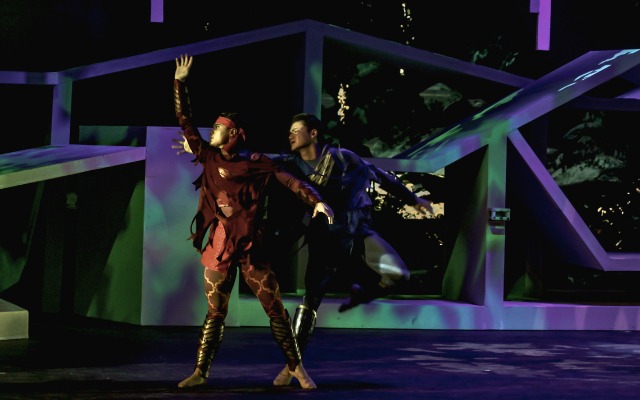
Flerida (Stephanie Santiago, left) and Laura (Abigail Oliveiro, right)
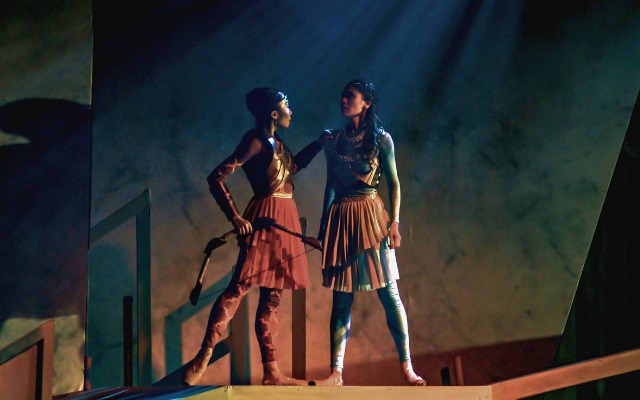
Perhaps a more decisive stance would’ve helped–either lean into the epic’s contemporary translation–which they already did with contemporary ballet choreography, costuming, and stage design–or stick to the old-world castles they projected on the screens. Access to technology is often seductive, with ease that wasn’t there even a decade or two ago. Yet, it could easily be a distracting tool that could lead to relying on dated styles, in this case, the unnecessary castles and pavilions–when the stage design is already solid for the needs of the performance.
Strengths and Empty Seats
There were endless battle scenes and conflicts in Florante at Laura. Ballet Manila’s decision to pay keen attention to Flerida’s escape, Laura’s struggles, and the friendship between the two are powerful key scenes and highlights in the performance. Flerida’s strength, in particular, and her capacity to change her and Laura’s narrative are powerful perspectives in an otherwise masculine and male-dominated narrative. Ballet’s capacity to accentuate feminine strength is observed in the performance.
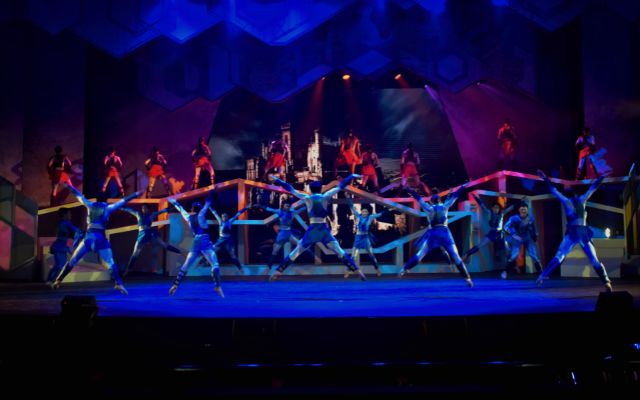
What saddened me, for the most part, was the empty seats last Sunday. Though there are a few things to review in the look of the show–overall, it was an excellent attempt at transforming a piece of 19th-century Philippine literature into a contemporary artistic performance. It lifts the dust off from a vague high school memory into a vibrant, lived experience. In terms of price point, it is much more affordable compared to sold-out foreign performances shown in the country in the past years. Hopefully, it will have a restaging in the coming years, and by then, it will pick up like Ballet Manila's Mga Kuwento ni Lola Basyang and Ibong Adarna.
Ballet Manila's Florante at Laura still has one more show on October 19, Saturday, at 5 p.m., at Aliw Theater, Pasay City. Tickets are available through Ticketworld.


